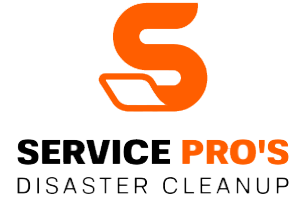Emergency Preparedness: How to Protect Your Home From Sewer Backups and Flooding
Just as ants prepare for winter, we too need to fortify our homes against potential calamities. Among the most insidious of threats are sewer backups and flooding, which can wreak havoc not just on our properties, but on our peace of mind as well.
Given the increasing unpredictability of weather patterns and the ageing infrastructure in many communities, it’s not just a smart move to protect our homes—it’s a necessity. But how should we go about it? What are the practical steps we can take to ensure we’re not caught unawares?
Let’s dig into the nitty-gritty of protecting our homes, and by extension, our sanity.
Understanding Sewer Backups and Flooding
 To adequately protect our homes, we first need to understand what sewer backups and flooding are and how they occur. Let’s start with sewer backups. Essentially, it’s when wastewater can’t flow through its intended path, often due to obstructions or overflows. This can cause sewage to reverse its course, potentially leading to severe property damage and health hazards.
To adequately protect our homes, we first need to understand what sewer backups and flooding are and how they occur. Let’s start with sewer backups. Essentially, it’s when wastewater can’t flow through its intended path, often due to obstructions or overflows. This can cause sewage to reverse its course, potentially leading to severe property damage and health hazards.
Now, on to flooding. It’s the overflowing of water onto normally dry land, often due to heavy rainfall, rapid snowmelt, or high tides. Flooding can infiltrate our homes and cause extensive structural damage. It’s also important to note that floodwater can be contaminated, posing serious health risks.
These issues often occur due to a variety of reasons. For sewer backups, causes can range from simple clogs to more serious issues like tree root invasion, collapsed sewer lines, or city sanitary main blockages. On the other hand, flooding can be caused by factors such as heavy or persistent rainfall, dam or levee failures, or rapid snowmelt.
In our fight against these problems, knowledge is our first line of defense. We can’t prevent what we don’t understand. By becoming familiar with the causes and potential damages of sewer backups and flooding, we’re better equipped to protect our homes. It’s a crucial step in our preparedness and response strategy.
Potential Causes of Sewer Problems
Having understood what sewer backups and flooding entail, let’s now explore the various causes of sewer problems that can compromise the safety of our homes. We must be aware that the main causes often include tree roots, blockages, and a deteriorating sewer system.
Tree roots can infiltrate our sewer pipes, causing significant damage and blockages. They’re attracted to the moisture inside the pipes and can expand, leading to cracks or complete pipe blockage. This can result in backups and flooding.
Another common cause is blockages due to improper disposal of items. It’s not unusual for us to flush items such as sanitary products, wipes, or cooking grease down our toilets or sinks. Unfortunately, these items don’t break down like toilet paper and can lead to serious blockages in our sewer system.
Lastly, let’s not forget the importance of the sewer system’s condition. Older homes often have outdated or deteriorated sewer systems that are more susceptible to leaks, cracks, and blockages. Improper maintenance of these systems can also lead to severe sewer problems.
We can’t forget about weather-related causes. Heavy rainfall or sudden thawing of snow can overwhelm the city’s sewer system, causing backups into our homes.
Understanding these potential causes of sewer problems is the first step in prevention. By knowing what to look out for, we can take appropriate measures to protect our homes from sewer backups and flooding. Remember, prevention is always better than dealing with the aftermath of a disaster.
Basic Home Protection Strategies
Let’s dive into some basic home protection strategies that can help safeguard our homes against sewer backups and flooding.
One simple yet effective strategy is to install backwater valves on the main sewer line. These valves prevent sewage from flowing back into the house during heavy rainfalls or when the city’s sewer system is overwhelmed.
Regular maintenance of our home’s drainage system is another important preventative measure. We should routinely check and clean the gutters, downspouts, and drains around our homes. If these are clogged, they can cause water to overflow and damage our property.
Another strategy is to waterproof our basements. This might involve sealing cracks in the walls and floors, installing a sump pump, or creating a drainage system that channels water away from the foundation. It’s also advisable to keep valuable items and electronics off the floor in case of flooding.
Additionally, we should consider flood insurance. Even if we’re not in a flood-prone area, sewer backups can still occur, and most homeowners’ insurance policies don’t cover this type of damage.
Lastly, it’s crucial to plan for emergencies. We should have a plan on where to go and what to do in case of severe flooding. Keeping an emergency kit with necessary supplies is also a good idea.
These basic strategies can go a long way in protecting our homes from sewer backups and flooding. By being proactive, we can minimize potential damage and the stress that comes with it.
Advanced Prevention Techniques
Building on our basic strategies, we can implement advanced prevention techniques to further fortify our homes against sewer backups and flooding. Let’s delve deeper into a few methods that can provide long-term solutions.
Firstly, we can install a backwater prevention valve on the sewer line. This specialized device allows sewage to flow out, but not back in. It’s an efficient and effective way to prevent backups. However, it’s not a do-it-yourself task – you’ll need a professional plumber for this.
Secondly, we can landscape our yards to direct water away from our homes. Grading the yard, installing swales, or creating rain gardens can help manage water flow. We’ll need to ensure the slope moves water away, not towards the foundation.
Furthermore, we can consider a sump pump. It’s valuable if your home is prone to flooding. The pump removes water that accumulates in the sump basin and discharges it outdoors, away from your home. Regular maintenance is crucial to prevent failures.
Lastly, we should also consider flood insurance. It isn’t a physical prevention method, but it’s invaluable in case of disaster. Homeowners’ insurance typically doesn’t cover flood damage, so it’s worth exploring separate coverage.
While these methods require some investment, they’re highly effective in preventing sewer backups and flooding, potentially saving us thousands in damage repairs. It’s important to remember that every home is unique, and we may need a combination of these techniques for optimal protection.
With these advanced prevention methods, we’re not just preparing for emergencies – we’re actively preventing them.
Handling Emergencies and Aftermath
Even with the best prevention techniques in place, emergencies can still occur, so it’s crucial we know how to handle them and deal with the aftermath. When we’re faced with a sewer backup or flooding, the first step is to ensure our family’s safety. We must evacuate immediately if the situation demands it. It’s essential we don’t attempt to salvage belongings at the risk of personal injury.
After the immediate danger has passed, it’s time to assess the damage. We should contact our insurance company promptly and document the damage thoroughly. This might involve taking pictures or video, which can help in the claims process. Before cleanup, we need to ensure it’s safe to re-enter our home. We should also contact professional cleanup services, as they’ve the necessary expertise and equipment to handle such situations.
In the aftermath of a sewer backup or flood, it’s also important we take steps to prevent future occurrences. We should make sure our home’s drainage system is working efficiently and the grade of our property directs water away from our home. If necessary, we may need to install a backwater valve or sump pump.
Lastly, we should develop a comprehensive emergency plan for our family. This includes having an evacuation plan, a list of emergency contacts, and a stocked emergency kit. We should also ensure all family members are familiar with this plan. In times of crisis, preparedness can make all the difference.
Emergencies are challenging, but with knowledge and preparation, we can effectively handle them and their aftermath.
Frequently Asked Questions
How Does Climate Change Affect the Frequency and Severity of Sewer Backups and Flooding?
We’ve observed that climate change increases rainfall intensity and frequency. This leads to more frequent and severe sewer backups and flooding, as our infrastructure can’t always handle the increased water volume efficiently.
What Are the Potential Health Risks Associated With Sewer Backups and Flooding in Homes?
We’re discussing the health risks of sewer backups and flooding. They’re serious, potentially causing illnesses from bacteria and mold exposure. Additionally, standing water can attract pests, leading to further health complications. It’s crucial to address these issues promptly.
Can Home Insurance Policies Cover Damages Caused by Sewer Backups and Flooding?
We’re often asked if home insurance covers damage from sewer backups and flooding. It’s not always the case. Coverage depends on the specific policy. Some offer it, but often it’s an additional rider that’s purchased separately.
Are There Any Government Assistance Programs Available to Help Homeowners Affected by Sewer Backups and Flooding?
Yes, there are government assistance programs available. We’d suggest looking into the Federal Emergency Management Agency’s (FEMA) assistance program. They’ve helped many homeowners with costs related to sewer backups and flooding.
How Long Does It Typically Take to Fully Restore a Home After a Major Sewer Backup or Flood?
We’ve found that it typically takes between 1-2 months to fully restore a home after a major sewer backup or flood. However, it’s dependent on the extent of the damage and the restoration company’s schedule.


